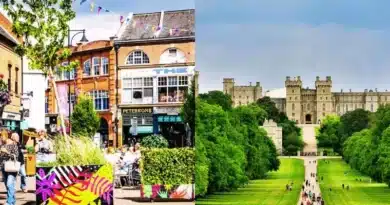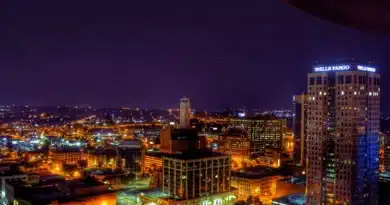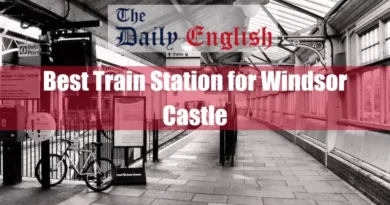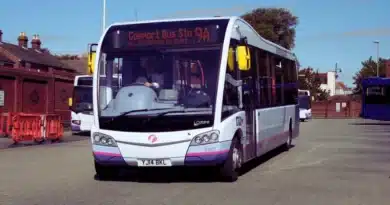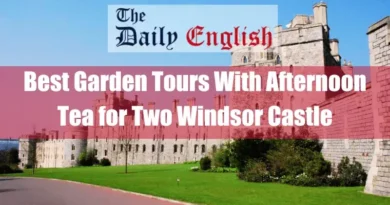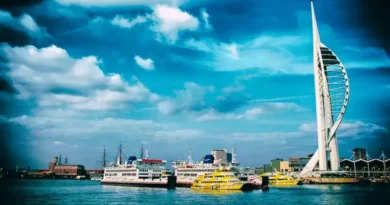How Far is Windsor Great Park From Windsor Castle?
Key Takeaways
| Key Aspect | Details |
|---|---|
| Location | Windsor Great Park is located in Berkshire, England, covering approximately 4,800 acres of natural landscapes. Windsor Castle is a historic royal residence nearby. |
| Travel Methods | The two main modes of transportation between Windsor Castle and Windsor Great Park are by car and bicycle. |
| Car Routes | There are three primary car routes: |
| – Via A332 | Quickest route (17 minutes, 7.1 miles). Includes several roundabouts and restricted-use roads. |
| – Via B3022 | Slightly longer (20 minutes, 7.8 miles). Involves multiple turns and restricted roads. |
| – Via A308 | Longest route (25 minutes, 9.5 miles). Includes complex navigation with multiple turns and restricted roads. |
| Car Travel Delays | Potential delays due to traffic congestion, restricted road access, unfamiliarity with routes, and complex navigation, especially during peak tourist seasons or local events. |
| Bicycle Routes | Three main bicycle routes are available: |
| – Via Crimp Hill | Moderate length (44 minutes, 7.8 miles). Includes restricted roads where cyclists might need to dismount. |
| – Via A30 | Longest route (1 hour, 10.5 miles). Involves several turns and main roads with vehicular traffic. |
| – Via Prince Consort’s Drive | Shortest route (38 minutes, 6.3 miles). Contains multiple turns and restricted paths. |
| Bicycle Travel Delays | Potential delays due to pedestrian traffic, need to dismount on restricted roads, navigation challenges, and busy areas around Windsor Castle. |
| Additional Travel Considerations | Factors like traffic conditions, weather, road works, navigational challenges, restricted roads, and pedestrian traffic can significantly affect travel time and experience. |
| Traffic and Weather Impact | Peak seasons, weekends, public holidays, and adverse weather conditions (e.g., rain, snow, fog) can increase congestion and hazards, leading to slower travel times for both cars and bicycles. |
| Navigational Challenges | Unfamiliarity with the area, complex routes with multiple turns and roundabouts, and restricted roads requiring special permissions can add to travel time. |
| Conclusion | Travelling between Windsor Castle and Windsor Great Park offers scenic views and historical context, but awareness of potential delays and planning is essential for a smooth trip. |
Introduction
Windsor Great Park, a vast and picturesque green space, is one of the many jewels of the Windsor area, known for its natural beauty, historical significance, and proximity to Windsor Castle. In Berkshire, England, Windsor Great Park covers around 4,800 acres and is renowned for its expansive meadows, lush forests, and the beautiful Virginia Water Lake. Windsor Castle, on the other hand, is a historic royal residence and the longest-occupied palace in Europe.
The park and the castle are popular destinations for tourists and locals alike, and the journey between them offers a scenic route through some of England’s most charming landscapes.
Distance and Routes from Windsor Castle to Windsor Great Park
The distance from Windsor Castle to Windsor Great Park varies depending on the chosen route and mode of transportation. The most common methods to travel between these two points are by car or bicycle, each offering its unique experience.
By Car
Travelling from Windsor Castle to Windsor Great Park is convenient and relatively quick. Drivers can take three main routes, each offering a different perspective of the local countryside.
1. Via A332 (17 minutes, 7.1 miles):
This route is the quickest, taking approximately 17 minutes to cover a distance of 7.1 miles. Drivers head west on Castle Hill from Windsor Castle, then turn left onto High Street (B3022). After passing through one roundabout, the road continues onto Kings Road. The journey proceeds by taking the second exit at the next roundabout to stay on Kings Road (A332), followed for about 3.2 miles. At the following roundabout, the first exit leads onto Sunninghill Road (B383). Drivers then make a sharp left onto Duke’s Lane, a road with restricted usage, and follow several minor roads with limited access until reaching the destination at Windsor Great Park.
Time-Delaying Factors: Traffic congestion, especially during peak tourist seasons or local events, can significantly increase travel time. The route involves several restricted-use roads, which may cause delays due to access limitations or potential closures. Additionally, navigating roundabouts can slow the journey, particularly during busy hours.

2. Via B3022 (20 minutes, 7.8 miles):
This slightly longer route takes about 20 minutes and covers 7.8 miles. From Windsor Castle, drivers head west on Castle Hill and turn left onto High Street (B3022), passing through one roundabout. They then turn right onto Frances Road (B3022) and continue straight. The route then follows St. Leonards Road, which transitions into Mounts Hill (B383). At the roundabout, drivers take the second exit onto Sunninghill Road (B383) and proceed in the same direction as the A332 route, which involves several restricted roads, before arriving at Windsor Great Park.
Time-Delaying Factors: Similar to the A332 route, traffic can be delayed significantly, particularly near the roundabouts and main intersections. Restricted road usage may also cause delays, and unfamiliar drivers might find navigating the sharp turns and narrow lanes challenging, adding extra time to the journey.
3. Via A308 (25 minutes, 9.5 miles):
The third option is the longest route, taking about 25 minutes and covering 9.5 miles. Starting from Windsor Castle, drivers head west on Castle Hill, turn left onto High Street (B3022), and continue onto Kings Road. At the roundabout, they take the first exit onto Albert Road (A308), following this road for about 2.3 miles. The route then transitions onto Priest Hill (A328) and St. Jude’s Road before turning right onto London Road (A30) and then onto Blacknest Road (A329). Afterwards, drivers turn onto Blacknest Gate Road and follow a series of restricted-use roads to reach Windsor Great Park.
Time-Delaying Factors: The longer distance and greater number of roundabouts can increase travel time, especially during heavy traffic. The route also includes sections of restricted usage roads, which may only be familiar to some drivers and can lead to delays. Additionally, the route’s complexity, with multiple turns and road changes, can slow the journey if drivers need to be well-acquainted with the area.

By Bicycle
Cycling is another popular way to travel from Windsor Castle to Windsor Great Park. It is a more scenic and environmentally friendly option. The area’s relatively flat terrain makes cycling enjoyable, and three main routes are available to cyclists.
1. Via Crimp Hill (44 minutes, 7.8 miles):
This route is a moderate-length cycling path, taking about 44 minutes to cover 7.8 miles. Cyclists start from Windsor Castle, head west on Castle Hill, and turn left onto High Street (B3022). They then turn right onto Sheet Street (B3022) and continue through one roundabout onto Kings Road. At the roundabout, the first exit leads onto Albert Road (A308), which cyclists follow for about 1.4 miles. The route then transitions onto St. Peters Road (B3021), leading onto Crimp Hill. Cyclists continue on Crimp Hill before turning right onto Bishopsgate Road and following Wick Lane. After a series of minor turns, the path eventually leads to Windsor Great Park.
Time-Delaying Factors: Potential delays on this route can occur due to pedestrian traffic near Windsor Castle and the narrow paths along certain route sections. Additionally, cyclists might need to walk their bikes in areas where riding is not permitted, such as restricted usage roads, which can add to the overall travel time.
2. Via A30 (1 hour, 10.5 miles):
The second cycling route is longer, taking about 1 hour to cover 10.5 miles. Cyclists leave Windsor Castle by heading west on Castle Hill and turning onto High Street (B3022), followed by a right turn onto Sheet Street (B3022). They continue onto Kings Road and take the first exit at the roundabout onto Albert Road (A308), which they follow for 2.4 miles. The route involves several turns and transitions, eventually leading to Egham Hill Roundabout, where cyclists take the A30. They continue on the A30, making a series of turns before reaching Windsor Great Park.
Time-Delaying Factors: The longer distance and exposure to main roads with vehicular traffic can increase travel time. Cyclists must be cautious at intersections and roundabouts, which can cause delays, especially during peak hours. The route’s length, complexity, and the need to dismount in certain areas can also contribute to a longer journey time.

3. Via Prince Consort’s Drive (38 minutes, 6.3 miles):
This is the shortest cycling route, taking about 38 minutes to cover 6.3 miles. From Windsor Castle, cyclists head west on Castle Hill, turn left onto High Street (B3022), and right onto Sheet Street (B3022). At the roundabout, they take the second exit onto Victoria Street, followed by a left onto St. Leonards Road and another left onto Osborne Road (A308). The route involves several more turns before leading onto Prince Consort’s Drive, a partially restricted road. Cyclists continue on this road, following a few minor turns and restricted usage paths to reach Windsor Great Park.
Time-Delaying Factors: This route is subject to delays due to pedestrian and vehicular traffic near Windsor Castle and along High Street. Restricted road usage may also slow cyclists, as they might need to dismount in certain areas. Navigating through narrow lanes and making several sharp turns can add to the travel time, especially if cyclists are unfamiliar with the route.
Additional Considerations for Travelling from Windsor Castle to Windsor Great Park
Regardless of the chosen mode of transportation, several factors can affect travel time between Windsor Castle and Windsor Great Park:
- Traffic Conditions: Peak tourist seasons, weekends, and public holidays can increase traffic congestion around Windsor, particularly near the castle and along the main routes. Events at Windsor Castle or Windsor Great Park can also cause temporary road closures or diversions, adding to travel times.
- Weather Conditions: Adverse weather, such as heavy rain, snow, or fog, can significantly slow down travel, especially for cyclists. Wet or icy roads can be hazardous, requiring extra caution and reducing speed.
- Road Works and Construction: Ongoing maintenance, road works, or construction projects along any route can cause delays. Temporary traffic signals, reduced speed limits, or detours might be in place, impacting travel times.
- Navigational Challenges: For those unfamiliar with the area, navigating the multiple turns, roundabouts, and restricted usage roads can be challenging. Drivers and cyclists may need to stop to check maps or GPS devices, which can add to the overall travel time.
- Restricted Usage Roads: Many routes to Windsor Great Park involve restricted usage roads, which can only be accessed by certain vehicles or require permission to enter. These roads can cause delays as drivers or cyclists navigate or around them.
- Pedestrian Traffic: High pedestrian traffic near Windsor Castle and along some parts of the routes can slow down both cars and bicycles. Extra caution is required in areas where pedestrians and vehicles share the road, and speed limits are often reduced.
Conclusion
Travelling from Windsor Castle to Windsor Great Park offers an opportunity to experience the Windsor area’s rich history and scenic beauty. Each route presents a unique journey through this picturesque part of England, whether by car or bicycle.
While various factors can influence travel times, being aware of potential delays and planning accordingly can help ensure a smooth and enjoyable trip between these iconic destinations.
FAQ
How far is Windsor Castle from Windsor Great Park?
The Long Walk is a historic, tree-lined avenue directly connecting Windsor Castle to the Copper Horse statue in Windsor Great Park. This scenic path stretches about 2.64 miles (4.2 km) one way, offering a seamless transition from the castle’s grandeur to the park’s natural beauty.
How long does walking from Windsor Castle to Windsor Great Park take?
Walking The Long Walk typically takes around an hour one way, depending on pace. The stroll offers scenic vistas, with Windsor Castle gradually receding as you approach the Copper Horse statue. The path is well-maintained and suitable for most walkers.
Can I cycle between Windsor Castle and Windsor Great Park?
Cycling is allowed on certain routes in Windsor Great Park, but The Long Walk is mainly for pedestrians. Check park regulations for designated cycling paths and be mindful of pedestrian traffic.
Is there public transport between Windsor Castle and Windsor Great Park?
Public transport directly connecting the two is limited. Walking The Long Walk is a practical option, offering both exercise and scenic views. Local taxi services are available for those preferring not to walk.
Are there guided tours from Windsor Castle to Windsor Great Park?
Windsor Castle offers guided tours, but specific tours covering both the castle and The Long Walk are uncommon. Contact the Windsor tourist information centre or local tour operators for details on guided experiences. Self-guided tour materials may also be available.
Is The Long Walk accessible for wheelchairs or prams?
The Long Walk is relatively flat and paved, making it accessible for wheelchairs and prams. Due to the considerable length, assistance may be needed, and preparation for the return journey is advisable. Facilities along the route are limited.
Are there rest areas along The Long Walk?
Benches and open spaces along The Long Walk provide spots to rest or have a picnic. However, there are no restrooms along the path, so plan accordingly.
Can I drive from Windsor Castle to Windsor Great Park?
Direct vehicle access between Windsor Castle and The Long Walk is restricted to maintain tranquillity. Parking is available near both locations. Walking is the best way to experience the route, though local taxis can provide transport to park entrances.
Is The Long Walk open year-round?
Yes, The Long Walk is open from dawn to dusk throughout the year. Check for temporary closures due to events, maintenance, or adverse weather conditions.
Are dogs allowed on The Long Walk?
Dogs are welcome but must be kept on a lead to protect wildlife and ensure safety. Bring waste bags to clean up after your pet.
Is there an entrance fee for Windsor Great Park?
Entry to Windsor Great Park is free. However, some attractions within the park, such as The Savill Garden, may charge an admission fee.
Is The Long Walk suitable for jogging or running?
Yes, The Long Walk is popular with runners due to its flat terrain and scenic views. Early mornings are ideal for less crowded runs. During peak times, be mindful of other visitors.
Is photography allowed along The Long Walk?
Yes, photography is permitted and popular along The Long Walk. Respect the environment and other visitors by avoiding obstructive setups. For commercial photography, seek permission from park authorities.
Are there any facilities or cafes along The Long Walk?
Facilities are limited. There are no cafes or restrooms directly on The Long Walk. Nearby, the Undercroft Café at Windsor Castle and the Windsor Farm Shop Café offer refreshments. The Savill Garden Visitor Centre provides dining options deeper in the park.
Can I see wildlife during the walk between Windsor Castle and Windsor Great Park?
Yes, the area is home to various wildlife, including deer and many bird species. To ensure safety, maintain a respectful distance from animals.
Is there signage along The Long Walk to guide visitors?
Signage is minimal, but the straight, tree-lined path provides clear navigation between Windsor Castle and the Copper Horse statue. Carrying a map or GPS device can offer additional assurance.
Are there any historical landmarks between Windsor Castle and Windsor Great Park?
Yes, the Copper Horse statue of King George III, erected in 1831, is a notable landmark. The Long Walk itself, created during Charles II’s reign in the late 17th century, has significant historical value.
Is walking from Windsor Castle to Windsor Great Park at dusk safe?
The Long Walk is generally safe, but walking during daylight hours is recommended due to limited lighting and increased wildlife activity at dusk. Daytime visits also offer better scenic views.
Can I start The Long Walk from either Windsor Castle or Windsor Great Park?
Yes, you can start from either end. Beginning at Windsor Castle offers a transition from historical architecture to natural landscapes while starting from Windsor Great Park, which provides a view of the castle as a focal point.




